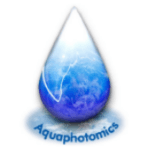
The past months have been very productive in terms of publications for the Aquaphotomics Team at Kobe University. The latest paper, written in collaboration with a group from Keio University in Tokyo and Peking University in Health Science Center, Beijing, is about one of the very common topics – discrimination between different waters. The article is published on Oct 12th, in Applied Science Journal as a part of the special issue Novel Spectroscopy Application in Food Detection.
Behind this article is an interesting story of a special milestone. The paper took few years of working and several rejections, in the end being but forgotten and overshadowed by topics that were seemingly more popular. And, then recently, due to a set of circumstances the paper came up in conversation and it was decided that a bit more attention should be given to the patient, waiting manuscript.
And then, a funny thing happened during publication. One of the received reviews started with almost a dash of boredom, asking (to paraphrase) “we already know that water spectral patterns can be used for this …and the temperature perturbation influence is also well-known …so what exactly is new here?”
That was it – the milestone. Some things had changed. Aquaphotomics has become mainstream. It was a pleasant discovery!
So, what is really new in this paper?
First novelty can be immediately spotted in the title – Aquaphotomics Reveals Subtle Differences between Natural Mineral, Processed and Aged Water Using Temperature Perturbation Near-Infrared Spectroscopy. This is the first publication that examined the “processed and aged waters”. The “processed” water can be a broad category which in later years is receiving more and more attention due to the often-protected trade secrets do not reveal how the water is really treated to achieve a claimed functionality. Usually, traditional ways of analysis using physical and chemical measurements fail to return any significant conclusions and support the claims of some health benefits. Despite, the market is flooded with such water products. On the other hand, there is a popular belief that the bottled water usually has no expiry date. That it does not change at all. The quality standards do not address this issue, and it is very difficult to even express what the quality parameters are in such case.
The newly published paper presents exactly this case, which actually very often appears in our research practice. It deals with the discrimination of water spectra, when it extremely difficult, in most of the cases even impossible to find the differences or change in the spectra of waters after processing or after some period of storage, when using traditional ways of multivariate analysis.
In the paper it was shown that solution to the problem is sample perturbation by temperature and using water spectral pattern (WASP) to track how water systems evolve with perturbation; no matter how small and subtle the differences were in the beginning, they will be revealed through the dynamics of WASPs. With this, the paper proposes a perturbation protocol for characterization of waters as a solution to difficult discrimination problems, and expresses hopes that these new findings would also be considered by developers of optical measurement systems, where it would be sufficient to just enable perturbation by consecutive light irradiation, it doesn’t even have to be temperature.
The freshly published paper can be found at the following links.
Abstract: https://www.mdpi.com/2076-3417/11/19/9337
PDF Version: https://www.mdpi.com/2076-3417/11/19/9337/pdf
